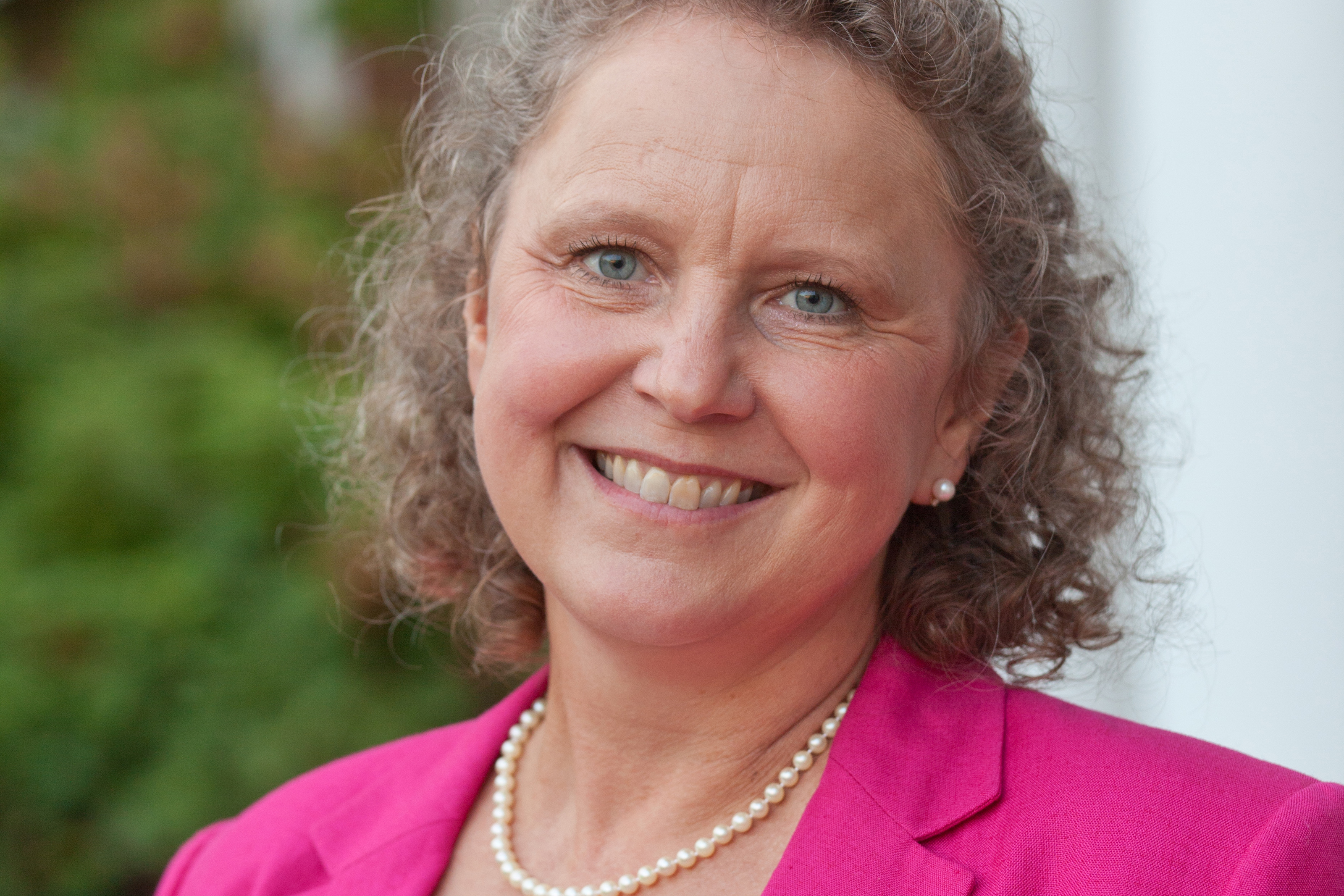By Kristen Mitchell
Today’s students will find themselves one day working in jobs that have yet to be thought up, using technologies that have yet to be invented to solve problems that have yet to be realized, said George Washington University's new Vice Provost for Research Pamela Norris at the School of Engineering and Applied Science’s annual BME Day on Monday.
Technology is expected to advance exponentially during this century. Teaching the fundamentals while instilling a passion for lifelong learning and supporting a diverse workforce are the best things faculty can do to put students on the path toward a meaningful career, she said.
“We don't know what the problems are. We don't know what challenges will be upon us,” she said. “It's diverse teams working together that are going to solve those problems.”
Dr. Norris gave the event’s keynote address, her first major engagement since officially starting her new GW role that morning. She spoke about her research in nanoscale heat transfer and the need for greater diversity and inclusion in engineering. Dr. Norris previously served as executive dean and as the Frederick Tracy Morse Professor of Mechanical and Aerospace Engineering at the University of Virginia School of Engineering and Applied Science and has decades of experience as an international leader in her field. In addition to her OVPR role, she will hold a faculty position in SEAS.
BME Day, hosted by the Biomedical Engineering Department, is an opportunity for SEAS students and faculty to hear from distinguished speakers, showcase undergraduate and graduate student presentations, participate in career panel discussions and more. This year, attendees were able to participate in the event in person and virtually. Since the department was formed seven years ago, it has shown “tremendous growth,” said SEAS Dean John Lach.
“It's been really exciting even just in the two years that I've been here to see the activity and the growth in this department,” he said. “It still feels like it's only the beginning of many, many more wonderful years to come.”
Dr. Lach previously worked with Dr. Norris at UVA, where she served as an accomplished researcher and effective leader who poured her time and energy into being a mentor for students and junior faculty members, Dr. Lach said.
“In my 21-plus years as a faculty member, I've met countless really amazing, intelligent, caring and impactful people,” he said. “But I have to say, I don't think that there is anyone who I trust, who I believe in and who I am just so excited to welcome as a colleague again as Dr. Pamela Norris.”
Dr. Norris spoke about fragmentation within the energy ecosystem, which she said poses a significant hurdle to progress. Individual disciplines often work in silos to come up with solutions—creating “operational islands” along the way—but the world’s most pressing problems are going to require greater collaboration among disciplines and with business professionals, policymakers and consumers.
Emerging technologies that combine human skills and machines will be increasingly part of our everyday lives. Future leaders will be working with robotics, cloud computing, virtual reality and artificial intelligence in ways that have not yet been realized. To address the challenges of tomorrow, industry needs a STEM capable workforce who can be “problem finders” instead of just problem solvers, she said.
“Problem finders require broadly educated people with diverse interests. It requires those interested in art, literature, science and anthropology,” Dr. Norris said. “These people are able to identify things people want before they even know they want them—that's what industry is looking for.”
Dr. Norris is a passionate advocate for creating more opportunities for women and underrepresented groups in STEM. The United States is graduating a small number of the world’s engineering students, which is harmful for both national prosperity and national security, she said.
“We need to increase that, and we can't increase it by just recruiting more white men to engineering,” she said. “We need to be diversifying the workforce as well.”
When you bring together diverse people with different backgrounds and perspectives, they can tackle challenges from various viewpoints. This leads to greater breakthroughs and iterative improvements, Dr. Norris said. SEAS has been a leader in this space. Forty percent of GW’s engineering undergraduate student body is made up of women, compared to only 23% on average at other American universities.
Dr. Norris was asked about her priorities as the new head of OVPR during a Q & A session following her address. She said she plans to spend the next few months listening and learning from faculty and ensuring that faculty have the freedom and the time available to do what they do best.
“I have the ecosystem reports, I'm aware of some challenges. I'll be listening to the community to hear what those challenges are,” she said. “What excited me about this position is, I sense a great deal of pent-up potential that can be released with more solid infrastructure.”



